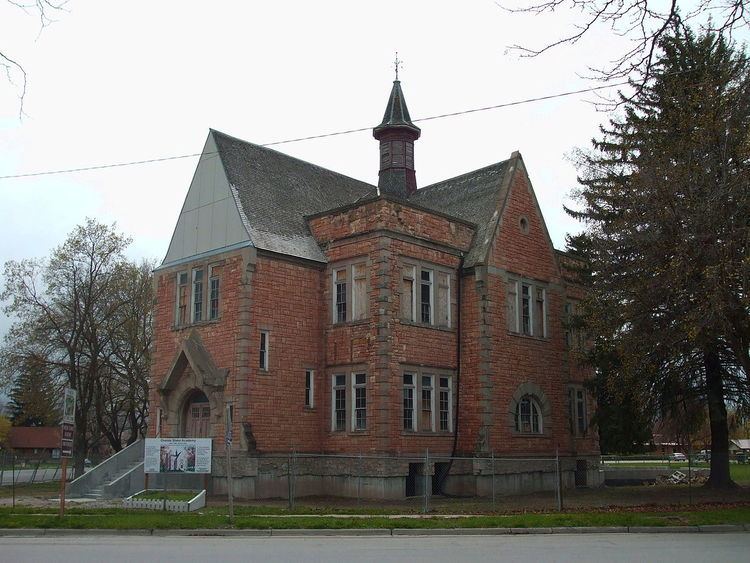Established 1877 Academic staff ca. 50,000 Location Worldwide | Students ca. 700,000 | |
 | ||
Type Elementary, Secondary, and Higher Education | ||
The Church Educational System (CES) of The Church of Jesus Christ of Latter-day Saints (LDS Church) consists of several institutions that provide religious and secular education for both Latter-day Saint and non–Latter-day Saint elementary, secondary, and post-secondary students and adult learners. Approximately 700,000 individuals were enrolled in CES programs in 143 countries in 2011. CES courses of study are separate and distinct from religious instruction provided through wards (local congregations). Kim B. Clark, a member of the First Quorum of Seventy, has been the Commissioner of the Church Educational System since August 1, 2015.
Contents
Seminaries
Religious education programs designed for secondary students are called seminaries. These are programs of religious education for youth aged 14–18 that accompany the students' secular education. In areas with large concentrations of Latter-day Saints, such as in and around the Mormon Corridor in the United States, and some places in Alberta, Canada, instruction is offered on a released time basis during the normal school day in meetinghouses, or facilities built specifically for seminary programs, adjacent to public schools. Released-time seminary classes are generally taught by full-time employees. In areas with smaller LDS populations early-morning or home-study seminary programs are offered. Early-morning seminary classes are held daily before the normal school day in private homes or in meetinghouses and are taught by volunteer teachers. Home-study seminary classes are offered where geographic dispersion of students is so great that it is not feasible to meet on a daily basis. Home-study seminary students study daily, but meet only once a week as a class. Home-study classes are usually held in connection with weekly youth fellowship activities on a weekday evening.
The seminary program provides extensive study of theology, using as texts the church's "standard works" (Old Testament, New Testament, Book of Mormon and Doctrine and Covenants) throughout the school week, in addition to normal Sunday classes. The four courses are taught, one per year, on a rotating basis (the 2016–17 curriculum follows the New Testament). Seminary students are encouraged to study each scriptural text on their own time and to memorize a total of 100 scriptural passages or "scripture mastery" verses during their participation in the four-year program.
Unlike use in other religious contexts, the word seminary, in an LDS Church context, does not refer to a higher education program designed to train students that they may obtain a church-based career. LDS seminary students do not get high school credit for their seminary studies.
Recently the LDS Church has piloted an online seminary program to supplement or supplant the home-study program. This online pilot program has seen success in helping meet the needs of home-study students separated by distances that make meeting daily impractical. Through the church’s online learning system, seminary teachers are able to incorporate student participation that includes sharing their own thoughts and ideas, as well as feelings and experiences they have had with the church. This helps provide a greater sense of community and connection as well as a chance to learn the gospel in a similar way that students do in areas with a larger concentrations of LDS youth.
Institutes of Religion
Religious education is also provided for students who enroll in post-secondary education, or those of student age (generally ages 18–30), through institutes of religion. CES Institutes serve more than 350,000 students in more than 2700 locations worldwide. Many colleges throughout the United States either have institute buildings or active programs near their campuses. Institute classes are offered in leased or owned facilities adjacent to institutions of higher education. Many LDS meetinghouses also lend their facilities for institute classes. Institute buildings are designed to provide a place for institute students to increase faith and understanding, learn church doctrines and life skills, carry out service projects, congregate, and socialize. The first Institute of Religion was established in northern Idaho at Moscow, adjacent to the University of Idaho. Currently the largest enrollment is at Utah State University in Logan, Utah. The largest enrollment outside the state of Utah is at Idaho State University in Pocatello, Idaho.
Elementary, secondary, and higher education
CES institutions that provide secular education, in addition to religious education, include elementary and secondary schools in Mexico and in the Pacific Islands, Brigham Young University, Brigham Young University–Idaho, Brigham Young University–Hawaii, and LDS Business College.
Elementary and secondary schools
Mexico
Pacific Islands
Higher education
History of academies
After the emigration to and settlement of the mountain west areas of the United States, the LDS Church set up a number of "academies." These religious secondary schools were called for by church president Wilford Woodruff following a federal takeover of Utah Territorial public schools. Nearly all stakes founded academies during 1888–91, with dozens of secondary schools created. Most, however, closed within the decade due to the depressions of 1893 and 1896. Some of the stronger academies persisted before being dissolved during church education cutbacks in the 1920s. These included academies from cities in Utah (Beaver, Millard, Coalville, Vernal, and Castle Dale); Idaho (Paris, Preston, and Oakley); Arizona (Snowflake and St. Johns); Colorado (Sanford); Wyoming (Cowley); and Alberta (Raymond). Some of these remain historical landmarks, such as the Oneida Stake Academy and the Big Horn Academy. The Juarez Academy in Colonia Juarez, Mexico, is still operated as a secondary school by the LDS Church today.
A few church academies eventually evolved into colleges or universities. These include:
The LDS Church also established formal colleges and universities:
In the mid-20th century, the church established secondary schools outside of the United States to provide education where it was not fully available. These include:
